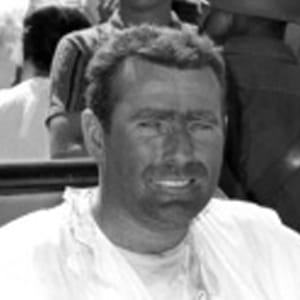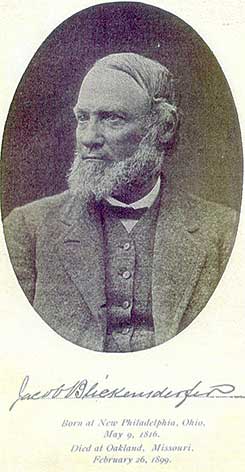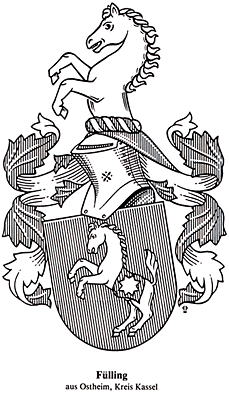Vic Wilson

In the 2004 movie Dust to Glory
Vic Wilson stated “As you go through life, if you knew you were making history you would have paid more attention to it.” Fortunately, since the inception of organized off-road racing Wilson has won races and helped shape the places where people can ride and drive thereby ensuring that his name holds a firm place in the written history of off-road motorsports. He won the first Mexican 1000 in 1967 and repeated the feat again in 1970. His place in the history of the sport goes beyond his accomplishments as a racer to designing venues around the country built specifically for off-road motorized use. Wilson was born in April of 1935 in Glendale, California. He spent his early years in Southern California in where his father owned the Holly Hill Ranch, an avocado ranch [sic]. As a young man, Wilson raced his Triumph motorcycle in the deserts California. While he enjoyed racing the bike he wanted to cover ground in a four-wheel drive vehicle so he purchased a Jeep. He attended Orange Coast College where he earned an Associates Arts Degree in Business Administration.
Wilson actively partook in the Southern California Jeep Clubbing and race scene of the late 1950s and early 1960s. He served as the President of the Orange County Four Wheelers Club and partook in Hemet Jeep Club rides. He traveled to Pismo Beach and Glamis, California, where he would drag race and take part in the hill climbing competitions. He toured from the rural roads of California to the Baja Peninsula in his Jeep, exploring the infrequently traveled dirt roads of the time. In 1965 when Brian Chuchua sponsored the first ever National Four Wheel-Drive Grand Prix, at Riverside California, Wilson took the title. He developed an excellent reputation as an extremely capable driver and successful competitor. Wilson at the age of 21 had opened his own service station in Costa Mesa. By 1959 he decided to expand his business, he sold the Costa Mesa Station and purchased a larger service station in Newport Beach, California. The Newport Beach business provided the automotive customer with full service, from a mechanical shop to gasoline sales to a car wash. Wilson employed over 30 people there. The shop at his station provided Wilson with a space to modify Jeeps and other vehicles for off-road use. Having a shop attracted other off-road enthusiasts to his business. Bruce Meyers, the dune buggy innovator and 1976 ORMHOF Inductee, was one of his customers. Meyers and Wilson often talked about their off-road experiences and traded notes on modifying vehicles. Meyers offered Wilson a chance to try out one of his Meyers Manx buggies. Wilson being a loyal Jeep driver did not exactly jump at the opportunity. Meyers eventually talked him into it and history was made.
Wilson drove the factory-backed Meyers Manx buggy to victory at the 1967 Inaugural Mexican 1000 along with Ted Mangels. The inaugural race organized was not the highly organized event it is today. Drivers found themselves on their own on route finding through the cattle and fishing trails of Baja with no pit support and no course markings. Wilson took on a large part of the driving counting on the Mangels’ navigational skills to find the quickest route. The men won the race with a time of 27 hours and 38 minutes. Wilson did not slow down racing after the Mexican win, he took the National Four Wheel Drive Grand Prix in Riverside, CA, and Mint 400 at Las Vegas both twice. In 1968 he returned to Mexico to race the 1000, he and co-driver Jeff Jahns led the race for the first three quarters when the wheel fell off their Myers Tow’d, they finished fifth. The next year when he returned, this time teamed up with vehicle builder Drino Miller, they led the race until night fell when the electrical system went out on the car, leaving them literally in the dark to finish second place.
In 1970 Wilson once again teamed up with Drino Miller this time repeating the feat of winning the Mexican 1000. Wilson became the first two time winner of the event. The men took turns driving the innovative single seat buggy built by Miller and Stanford Havens. Wilson drove the first half of the race and Miller took on the final leg. They completed the course in 16 hours and 7 minutes. Their time bested Wilson’s first win of the event in 1967 by 11 hours and 31 minutes. Wilson’s life and involvement with off-road vehicles stretched beyond the race course. In 1967, the same year he won the first Mexican 1000, Wilson along with two partners founded the Saddleback Park near Irvine CA. Saddleback Park was a legendary proving ground for off-road racers and weekend riders alike. Wilson along with Joe Parkhurst, then publisher of Cycle World Magazine and Bruce Meyers founder of the Meyers Manx leased 700 acres of land near Irvine Lake in the hills of Orange County from the Irvine Company. Wilson co-owner and operator of the Park and sold his Newport service station in order to run the Park on a full-time basis. He studied the topography and determined where to lay out the park’s trails. He developed new skills operating machinery he shaped the landscape into challenging courses, tracks, and trails for all types of off-road vehicles. The Park provided a place for off-road users to run their vehicles during a period of numerous closings of places they had driven in the past.
Saddleback Park hosted many championship events such as the CMC Golden State series, Trans-AMA, Out Door MX Nationals, World Mini GP, National Championship Trials, A BMX National, Enduros, TT and Flat Tracks. The Park management hosted events such as the “Baja De Saddleback.” “Baja De Saddleback” utilized the entire acreage of the park to host a rough and fast off-road course. At the Park Wilson created and ran the “Motorcycle Olympiad.” The “Olympiad” followed a format where the riders used the same bike in six different events and combining the scores for the winner. Saddleback Park was the first specialized off-road park facility in the States and it featured one of the first motocross tracks in this country. Over 700 visitors could be found there on any Sunday of the year. Everyone from first-time riders to factory test teams utilized the Park. Wilson operated the Park successful and sold it to Marvin Hendriks in 1980. The Irvine Company did not renew Hendriks’ lease in 1983 due to the prevailing trend towards law suites and the resulting high costs of insurance. Today the trails of the Park once traveled by thousands of users are barely visible. Wilson took his experience from Saddleback Park and started the Reactions, a company which consulted Federal Agencies, State Governments and Local Governments on the park design, operations and feasibility of establishing dedicated off-road use areas and parks. Wilson oversaw the development of off-road parks in most of the western states including Hawaii. Among the parks he designed are the Hungry Valley Park near Los Angeles, Carnegie Park near Livermore, California, Hollister Hills near Hollister, California, Prairie City in Sacramento, California and Iron Range OHV in Virginia, Minnesota.
In addition to his consulting work, he remained active as a promoter of off-road motorsports. He organized and promoted events such as the Sierra Safari at Mammoth Mountain, California and the all-VW Bug-In. The Bug-In ran from 1969 through 1989 and often had more than ten-thousand participants. The Sierra Safari took dirt bikers across a 300-mile long course and was limited to an exclusive group of 150 riders able to handle the challenging trails. Wilson lives outside of Reno, Nevada with his wife. He runs the Spectrum company which works with mortgages and land development in Nevada. He drives a Ford Ranger pre-runner [?] and enjoys attending the occasional off-road event as a spectator.
Sources: Interview with Vic Wilson July 2006 Fiolka, Marty. 2005. 1000 Miles to Glory, The History of the Baja 1000. Phoenix, AZ.: David Bull Publishing.
Found at: ORMHOF

